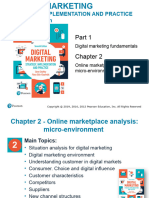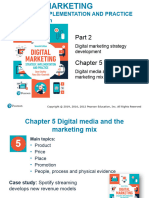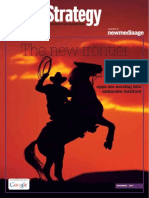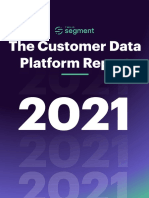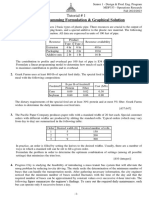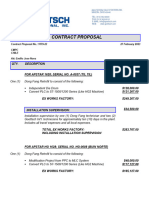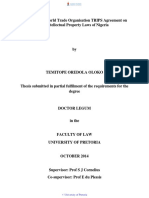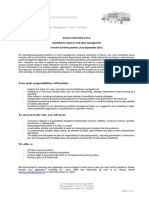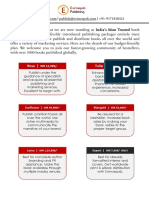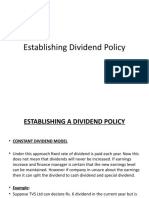DIGITAL MARKETING
STRATEGY, IMPLEMENTATION AND PRACTICE
Seventh Edition
Part 3
Digital marketing:
implementation and practice
Chapter 10
Evaluation and improvement
of digital channel performance
Copyright © 2019, 2016, 2012 Pearson Education, Inc. All Rights Reserved
�Chapter 10 Evaluation and improvement
of digital channel performance
Main topics
• Performance management for
digital channel
• Content management process
• Responsibilities for customer
experience and site
management
Case study 9. Learning for Amazon’s culture of metrics
Copyright © 2019, 2016, 2012 Pearson Education, Inc. All Rights Reserved
�Digital marketing components
Copyright © 2019, 2016, 2012 Pearson Education, Inc. All Rights Reserved
� Web/digital analytics
• Web analytics is the measurement, collection,
analysis and reporting of Internet data for the
purposes of understanding and optimising web
usage.
• Techniques used to assess and improve the
contribution of digital marketing to a business,
including reviewing traffic volume, referrals,
clickstreams, online reach data, customer
satisfaction surveys, leads and sales.
Copyright © 2019, 2016, 2012 Pearson Education, Inc. All Rights Reserved
�Performance measurement for digital channels
3-stage process:
• Stage 1 Creating a performance measurement
system
• Stage 2 Defining the performance metrics
framework
• Stage 3 Tools and techniques for collecting
insights, running processes, and yielding
results
Copyright © 2019, 2016, 2012 Pearson Education, Inc. All Rights Reserved
� Most popular analytics functions
1. Reporting and dashboard visualisation (82%);
2. Analysis of past performance (80%);
3. Optimising website functionality and
conversion (67%);
4. Optimising campaign performance (67%);
5. AB and multivariate testing (52%).
Copyright © 2019, 2016, 2012 Pearson Education, Inc. All Rights Reserved
� Common analytics challenges
1. Data access/data silos (22%);
2. Incomplete data (16%);
3. Inaccurate data (16%);
4. Inadequate analytics tools (10%).
Copyright © 2019, 2016, 2012 Pearson Education, Inc. All Rights Reserved
� Figure 10.2 A summary of the
performance measurement process
Copyright © 2019, 2016, 2012 Pearson Education, Inc. All Rights Reserved
�Figure 10.3 The five diagnostic categories
for digital marketing measurement
Copyright © 2019, 2016, 2012 Pearson Education, Inc. All Rights Reserved
�Figure 10.4 potential reasons for causing
attrition on an e-commerce site
Copyright © 2019, 2016, 2012 Pearson Education, Inc. All Rights Reserved
� Figure 10.5 Multichannel performance
scorecard example for a retailer
Source: Wilson (2008)
Copyright © 2019, 2016, 2012 Pearson Education, Inc. All Rights Reserved
�Figure 10.6 Thirty categories of MarTech and insight
tools structured across the customer lifecycle
Source: Smart Insights (2017)
Copyright © 2019, 2016, 2012 Pearson Education, Inc. All Rights Reserved
� Problems of deploying MarTech
• No long-term plan for martech.
• Insufficient rigour when evaluating martech.
• Technology solutions from different vendors
aren’t integrated.
• Data is inconsistent.
• Customer journeys can’t be tracked across
channels.
• New martech isn’t rolled-out with sufficient
updates to training and process.
• Return on marketing technology isn’t
reviewed.
Copyright © 2019, 2016, 2012 Pearson Education, Inc. All Rights Reserved
� Figure 10.7 Examples of different
measures of visitor volume to a website
• Pages per visit
(PPV).
• Visits per
(unique) visitor
(VPV)
Copyright © 2019, 2016, 2012 Pearson Education, Inc. All Rights Reserved
�Figure 10.8 A framework for different measures used
to evaluate and manage social media marketing
Source: Altimeter (2010) with permission (Creative Commons)
Copyright © 2019, 2016, 2012 Pearson Education, Inc. All Rights Reserved
� Example of AB testing
Test A (Control) B (Test page)
Test 1 Original page New headline, existing button, existing body
copy
Test 2 Original page Existing headline, new button, existing body
copy
Test 3 Original page Original page Existing headline, existing
button, new body copy
Copyright © 2019, 2016, 2012 Pearson Education, Inc. All Rights Reserved
�Figure 10.10 Results of multivariate testing for
National Express
Source: Oracle Marketing Cloud Customer Success Story, https://www.oracle.com/marketingcloud/customers/success-stories/nationalexpress.
html (accessed May 2018)
Copyright © 2019, 2016, 2012 Pearson Education, Inc. All Rights Reserved
�Interpreting web analytics data
Copyright © 2019, 2016, 2012 Pearson Education, Inc. All Rights Reserved
�Interpreting web analytics data
Copyright © 2019, 2016, 2012 Pearson Education, Inc. All Rights Reserved
�Interpreting web analytics data
Copyright © 2019, 2016, 2012 Pearson Education, Inc. All Rights Reserved
�Figure 10.11 Different types of data within a performance
management system for Internet marketing
Copyright © 2019, 2016, 2012 Pearson Education, Inc. All Rights Reserved
� Content management process
A process of continuous improvement in online marketing,
which involves:
1. Write
2. Review
3. Correct
4. Publish
5. Test
6. Publish
Copyright © 2019, 2016, 2012 Pearson Education, Inc. All Rights Reserved
�Responsibilities for customer experience
and site management
Questions to ask are:
Who owns the process? Who owns the format?
Who owns the content? Who owns the technology?
Copyright © 2019, 2016, 2012 Pearson Education, Inc. All Rights Reserved
� Case study 9: Learning from Amazon’s
culture of metrics
Questions:
1. Evaluate how well Amazon communicates its core proposition and
promotional offers
2. Characterise Amazon’s approach to marketing communications
3. Explain what distinguishes Amazon in its use of technology for
competitive advantage
4. How does the Amazon ‘culture of metrics’ differ from that in other
organisations?
Copyright © 2019, 2016, 2012 Pearson Education, Inc. All Rights Reserved












